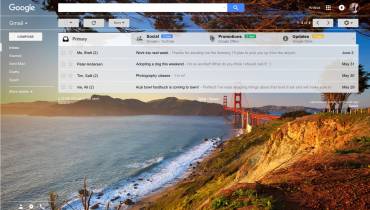How Content Writers Can Balance Creativity and Marketing Techniques

Many freelance writers get into the business of content creation because they’re writers who enjoy flexing their creative muscles… only to find that they can’t just dash off a few hundred words per assignment and call it a day.
Indeed, as my fellow jaded content writers can attest, there are endless factors to consider when creating content for clients, not to mention the behemoth of Google and its algorithm constantly looming over you.
As a result, one of the biggest challenges of the modern content creator and freelance writer is producing content that’s creative and engaging, yet also follows content marketing strategies for SEO and widespread consumer appeal.
But don’t despair! It is absolutely possible to write marketing- and SEO-friendly material, while still preserving your artistic and creative integrity: in other words, the freelancer’s dream.
Steps to Achieve the Right Balance Between Creativity and Marketing in Content Creation
Here are a few tried-and-true tips to help you achieve that balance, based on my own personal experience.
1. Research and outline before you write
Some writers habitually eschew outlines in order to give their creative prowess total free reign. In the world of fiction, these people are known as “pantsers,” because they “fly by the seat of their pants” rather than meticulously plotting their way through a piece. And while pantsing is a fairly popular technique for writing fiction, it typically spells disaster for non-fiction — which includes the articles, blog posts, and all other copy that freelancers create for their clients.
This doesn’t mean you have to quash your creativity as a freelancer, only that you have to construct a mold for it before you actually start writing. I learned this lesson the hard way: my first assignment at my current job was a blog post about a subject that I already knew very well.
Eager to begin, I started scribbling down everything that came to mind. Then I tried to shape it into a post… and found that my thoughts were impossible to organize in a logical way. Not only that, but the piece didn’t target any of the keywords that I’d been given, nor was it suitable for our target audience. I had to start over, with my creative resources significantly depleted.
In other words, a strategy that I thought would facilitate my creativity ended up curtailing it. That’s why all content writers — but especially individual freelancers — need to do their keyword research and compose a solid outline before they start.
I would definitely recommend using Ahrefs to look at related keywords so you can incorporate them early, and taking notes on the Google search results for your top keywords so you can imitate the structure of those posts.
Once you’ve got a structure in place, you can be as creative as you want with the details. But don’t try to skip this step; you’ll just be setting yourself up for failure later.
2. Turn obstacles into personal challenges
There are many constraints in content creation, and while outlining may be a boon to your overall creativity, it can be difficult to see other suggested techniques the same way. For example, according to Yoast’s SEO guide, no more than 25% of sentences in a given piece should contain over 20 words.
As a fan of lists and detailed descriptions, I usually struggle to action this advice. I also find it frustrating to have to cut out long paragraphs and instances of passive voice in order to make my content more “digestible.”
However, after cooling off from the one-sided yelling matches I often have with the Yoast Wordpress plugin, I have to admit its validity. Nobody wants to read long paragraphs full of run-on sentences, and passive voice is, in fact, terrible form. So instead of defying these obstacles, I recast them in my mind as worthy challenges that will help be become a betetr writer.
I change my passive voice to active and find that it really does sound more convincing. I break down my sentences and paragraphs and grudgingly admit that the text is a lot easier — and more interesting — to read. Ultimately, I use my creativity not to ignore, but to embrace the aspects of content writing that would otherwise leave me despondent.
These obstacles will be different for everyone, of course. Some freelancers might have trouble with keyword density, while others might dislike dividing their work into sections. Then there’s the perpetual challenge of making sure your content stands out from the crowd, especially when the competing pages are very strong. But no matter what your greatest challenge, you’ll find that tackling it creatively is much more satisfying than pretending it doesn’t exist.
3. Build interesting multimedia content
Speaking of making your content stand out from the crowd: as Google’s algorithm increasingly prioritizes pages with many different types of content, it’s important to think not only about your written content, but also images, videos, and other interactive elements. As Narendra Sharma touches on in this post, these features are a huge part of generating the “big content” that will impress your clients and their users. And the more unique it is, the better — meaning that this is the perfect opportunity to exercise your creativity!
For example, say you’re writing a post entitled “The 5 Best Apps to Help You Save Money (Today!)”. In addition to the content you’ve written, you could whip up an infographic that provides fast facts about each of the apps, which will attract readers’ attention and maybe even compel them to share.
Or to increase engagement and site “stickiness” (how long someone stays on a page), you could put a quiz at the start that questions readers about their spending habits (e.g. “Are you a Frugal Franny or an Extravagant Emily?”). You might even intersperse the entries with little video demos, or audio clips of the app creators explaining how they work (as we did for a recent post on writing podcasts over on the Reedsy blog).
Once you tap into your creativity, the possibilities are endless! The only drawback here is that you might find yourself limited by your resources. But the good news is that if you have a gold-star idea, your client may be willing to fund it, or even put some of their own people on it. For instance, if you have an idea for a video, they could have their videographer shoot it — just don’t forget to bill them for the concept or script on your invoice.
And if you need help convincing clients that multimedia content is valuable, simply point to all the high-ranking posts out there that feature a video or infographic! Your multimedia brainchild will be a reality in no time.
4. Get feedback from a variety of sources
Finally, remember that just because you’re a freelancer, doesn’t mean you’re in this alone. A major component of both maximizing your creativity and producing great content is getting feedback.
Other people can help identify your blind spots, broaden your horizons, and enhance the overall quality of your work. So even if you normally shy away from asking for people’s opinions (I know it’s hard!), now is the time to do so.
Naturally, you want to know what the client thinks of your content, ideally at an early stage so you can be more flexible with any changes they might request. You should also ask any other writers, especially fellow freelancers, that you may know — their feedback will be particularly helpful, since they’ve been in your exact position before.
After you’ve gotten feedback from various sources and you can recognize what needs changing, it’s time to amp up your creativity and actually make those changes. And you’re definitely going to need creativity on your side; it can be a real slog otherwise.
However, as with the obstacles you faced while writing the piece, thinking of editing it as a comparable challenge — designed to sharpen your skills and improve your approach to similar assignments in the future.
Yes, content marketing can often feel like an uphill battle, especially as a freelancer. Constantly fluctuating clientele certainly isn’t easy, especially if you haven’t quite found your niche yet. But if you take these tips to heart, you’ll find it much easier to balance the scales going forward… and retain your sanity in the process.

 Savannah Cordova is a writer with Reedsy, a marketplace that connects authors and publishers with the world’s best editors, designers, and marketers. She's very interested in content marketing trends and hacks for creators. In her spare time, Savannah enjoys reading contemporary fiction and writing short stories.
Savannah Cordova is a writer with Reedsy, a marketplace that connects authors and publishers with the world’s best editors, designers, and marketers. She's very interested in content marketing trends and hacks for creators. In her spare time, Savannah enjoys reading contemporary fiction and writing short stories.


















